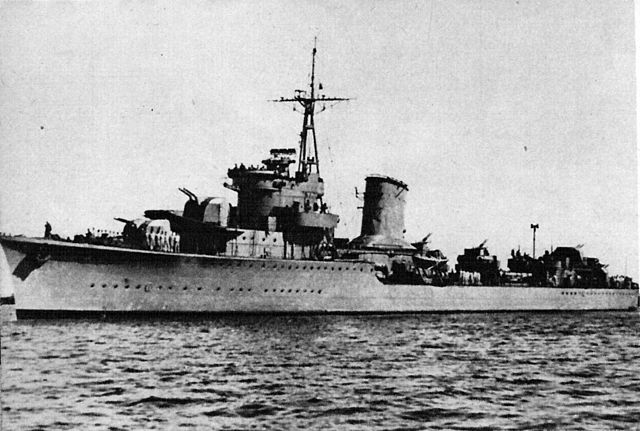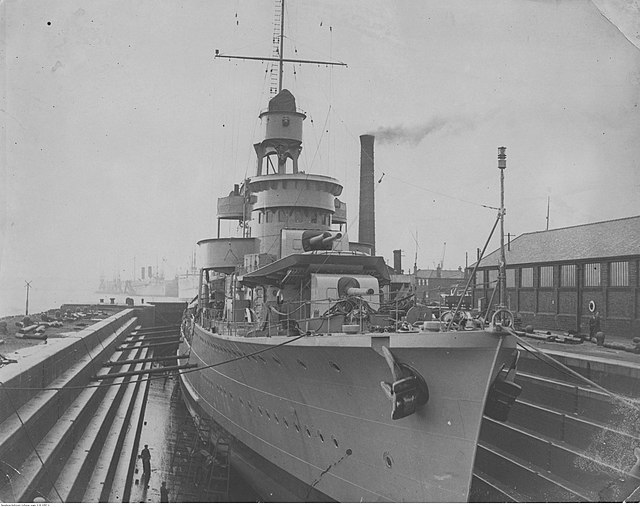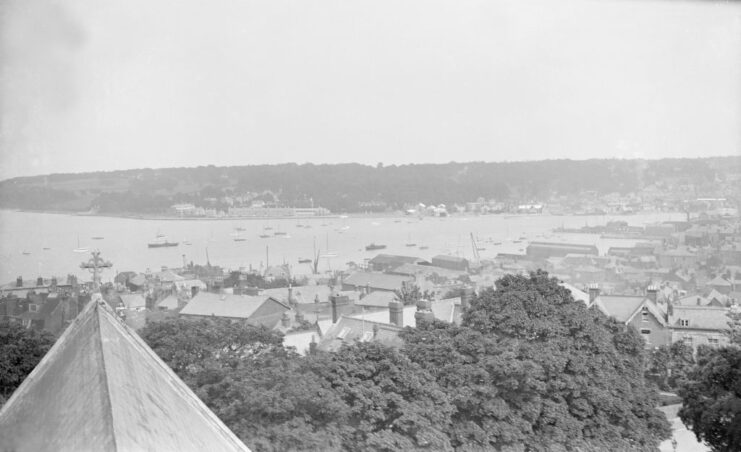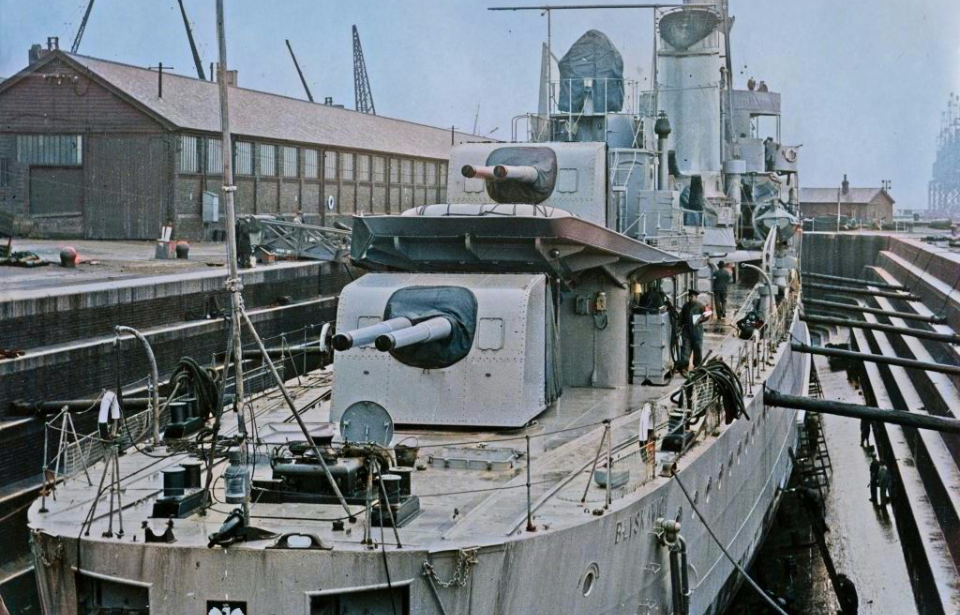While often overlooked when it comes to naval warfare, Poland has operated some major machinery on the high seas – including two of the fastest and most heavily armed destroyers of the Second World War. The Grom-class were a fearsome sight in combat, with one, the ORP Błyskawica, going on to survive the conflict and serve as a permanent reminder of the actions taken to defeat German tyranny.
Development of the Grom-class

Before we discuss what the ORP Błyskawica accomplished during World War II, we first need to look at the circumstances surrounding why she and her sister ship, the ORP Grom, were constructed. To do that, we need to go all the way back to the Danzig Crisis of 1932.
Essentially, the Danzig Crisis was an incident between Poland and the Free City of Danzig (today known as Gdańsk). The Polish government believed it had the right to both station warships across Danzig Harbour and represent the city on the international stage – something Danzig disagreed with.
The crisis ultimately concluded in Poland’s favor, with the country’s de facto leader, Marshal Jósef Piłsudski, allotting more funds toward its naval pursuits. Before long, J. Samuel White had been contracted to design two new destroyers, which ultimately went on to be dubbed the Grom class.
By November 25, 1937, Błyskawica had been built and commissioned into the Polish Navy.
ORP Błyskawica specs.

When we say the Grom class was among the most heavily armed and fastest of World War II, we mean it. Their power came from two sets of geared steam turbines fed by three-drum boilers, which gave them a maximum speed of 45 MPH. This was crucial, as the pair were intended to serve as submarine chasers and fast surface attack vessels.
When focusing on the ORP Błyskawica, we see several changes in her armament, with the vessel’s original weaponry consisting of seven 120 mm guns; four Bofors 40 mm anti-aircraft guns; eight Hotchkiss 13.2 mm machine guns; and six torpedo tubes capable of firing 533 mm French torpedoes. On top of that, she was fitted with depth charge throwers and the ability to carry 44 mines.
As time when on and she underwent upgrades, Błyskawica‘s armament changed. Just a few years into the war, she sported eight GF four-inch Mk XVI dual-purpose guns; four 40 mm anti-aircraft guns; and four Oerlikon 20 mm anti-aircraft guns, while her post-war years saw her fitted with Soviet weaponry.
Seeing action throughout World War II

Unsurprisingly, the ORP Błyskawica saw a lot of action throughout the Second World War. Just prior to the German invasion of Poland, she, along with the ORP Grom and Burza withdrew to Britain, as a way of protecting them from being damaged. While there, she and her sister ship underwent several modifications, as it was determined they weren’t fit for operations in the North Atlantic.
Błyskawica engaged in her first actions of the conflict on September 7, 1939, when she attacked a U-boat at sea. From there, she was active in combat against German forces. She shelled German positions and downed Luftwaffe aircraft during the Norwegian Campaign, before heading south to participate in Operation Dynamo, the British-led evacuation of soldiers from Dunkirk.
After that, the destroyer split her time between the Atlantic and Mediterranean. She escorted over 80 convoys, conducted 108 patrols and logged between 138,000 and 146,000 nautical miles, before being transferred to Cruiser Force Q and stationed off North Africa. She was soon after assigned to the Canadian-British-Polish 10th Destroyer Flotilla to support Allied efforts in the English Channel – including the D-Day landings.
Defending the Isle of Wight against German air raids

The ORP Błyskawica‘s most notable engagement of World War II occurred on the night of May 4-5, 1942, when she defended the Isle of Wight town of East Cowes from two Luftwaffe air raids. Notably, she shouldn’t have been able to participate in the action, as she was supposed to have been disarmed for a refit. Luckily, her captain was experienced enough to know he needed to keep a stockpile of ammunition aboard the destroyer, in case something happened.
Supported by local air raid patrol (ARP) anti-aircraft guns and small-caliber weapon fire from Free French naval units that had been based further south, Błyskawica fired at the attacking German aircraft, forcing them to stay too high to accurately hit their targets. She also laid a smokescreen over the town, hiding it from sight on the dark night.
When the raids subsided, the destroyer’s captain sent his men ashore to help fight fires and provided medical assistance to those who’d been injured. While East Cowes had been heavily damaged, it’s believed the town would have suffered a much worse fate had it not been for Błyskawica‘s defensive action.
ORP Błyskawica‘s post-war career and retirement
When Poland fell under Soviet control in the post-war era, so, too, did the ORP Błyskawica. She began this time by serving as a training vessel, before undergoing some final upgrades that included the addition of Soviet armament and radar, along with an updated propulsion system.
From there, she performed dual training-courtesy roles, visit various foreign ports.
Unfortunately, a tragic accident struck Błyskawica on August 9, 1967. While conducting an exercise at sea, a high-pressure steam pipe ruptured aboard the destroyer, taking the lives of seven sailors. It was this incident that took her out of sea duty, with it decided that, instead of undergoing repairs, she would be stationed at the port of Świnoujście for anti-aircraft defense. While the Cold War hadn’t grown hot, the Soviet Union was aware of the need for defensive measures, just in case.
More from us: HMS Glowworm (H92) vs Admiral Hipper: A Daring Battle in the North Sea
Błyskawica was officially decommissioned in May 1976 and turned into a museum ship. The oldest preserved destroyer in the world, she is now part of Gdynia’s Naval Museum and is moored next to the Dar Pomorza, a Polish full-rigged sailing ship.
